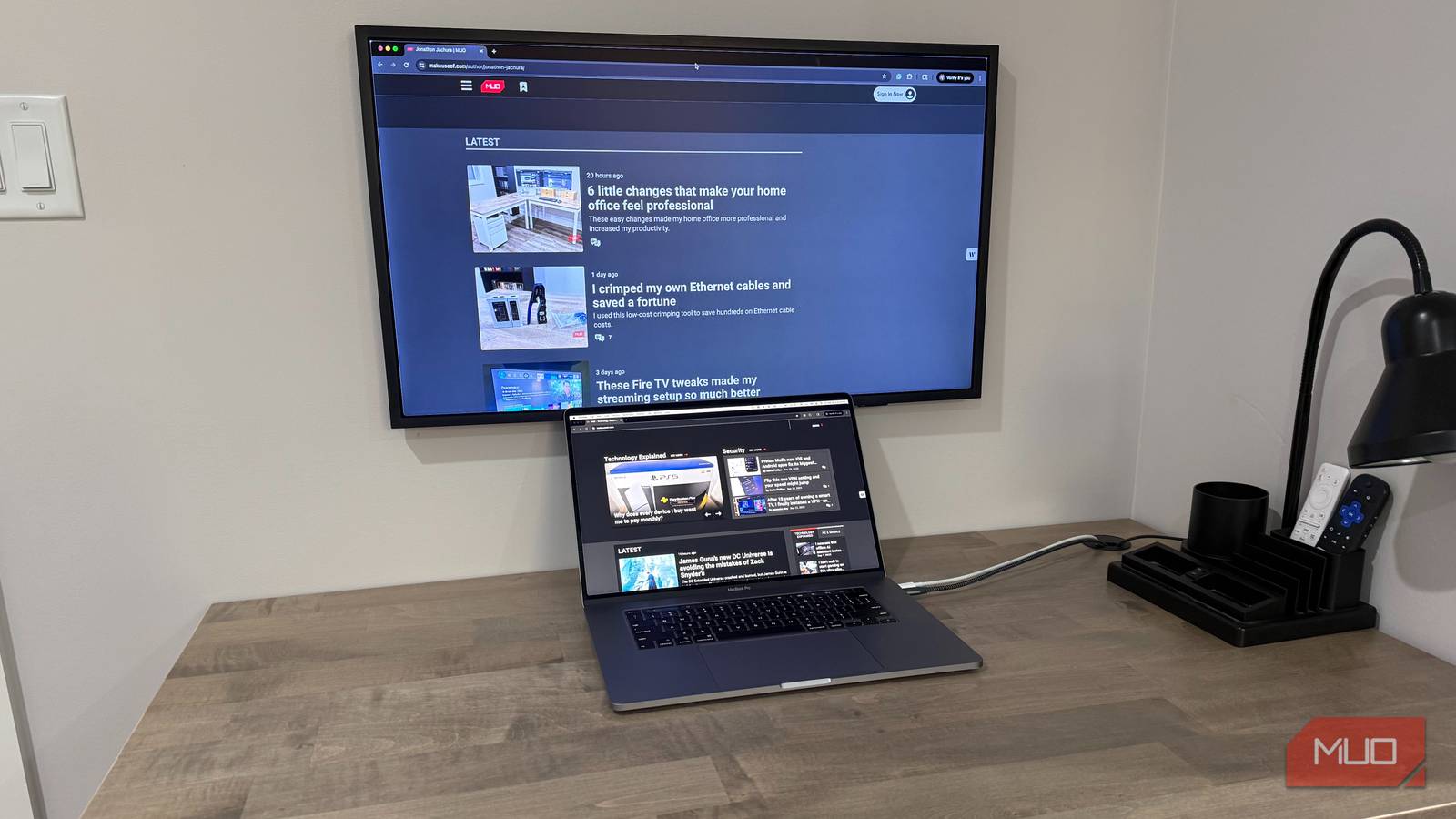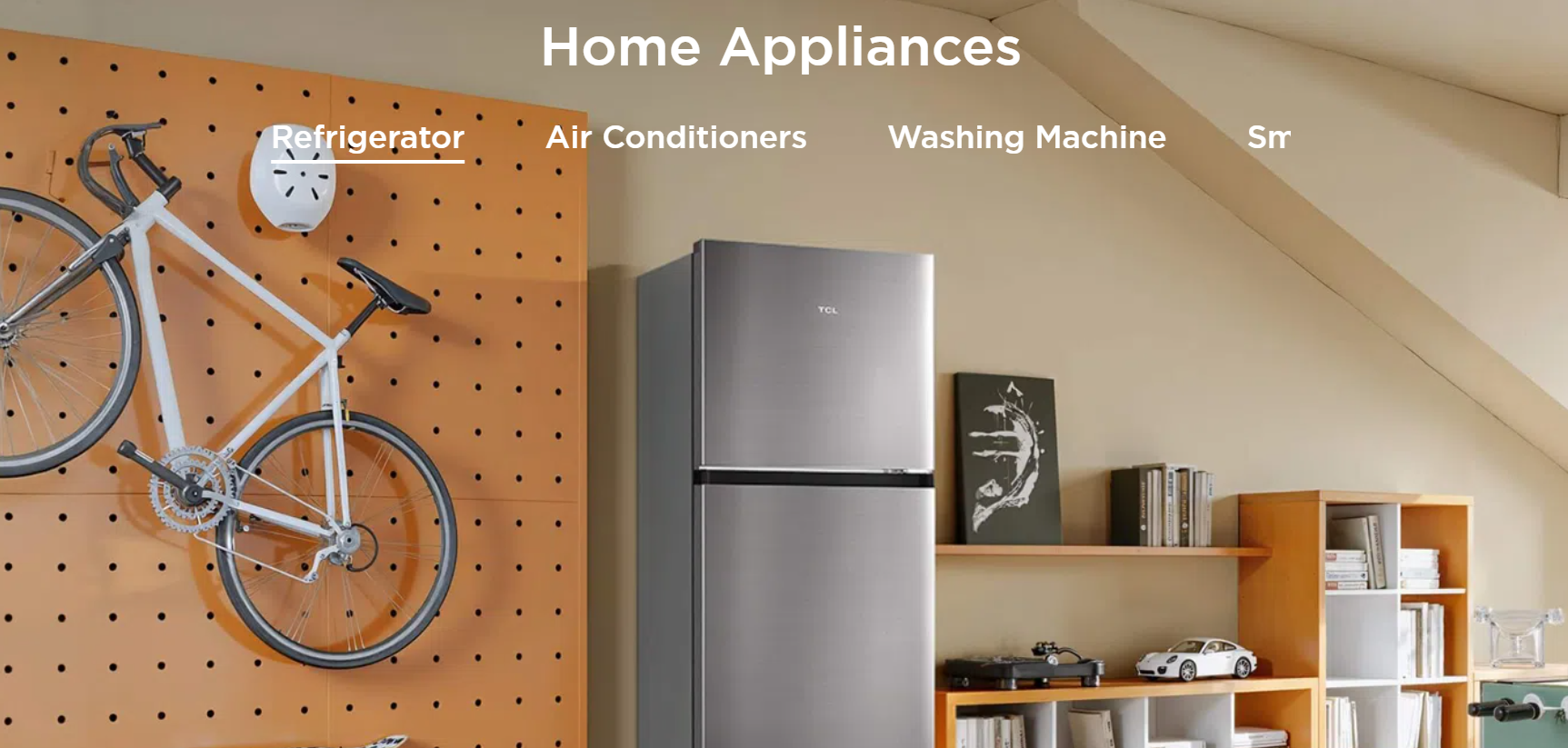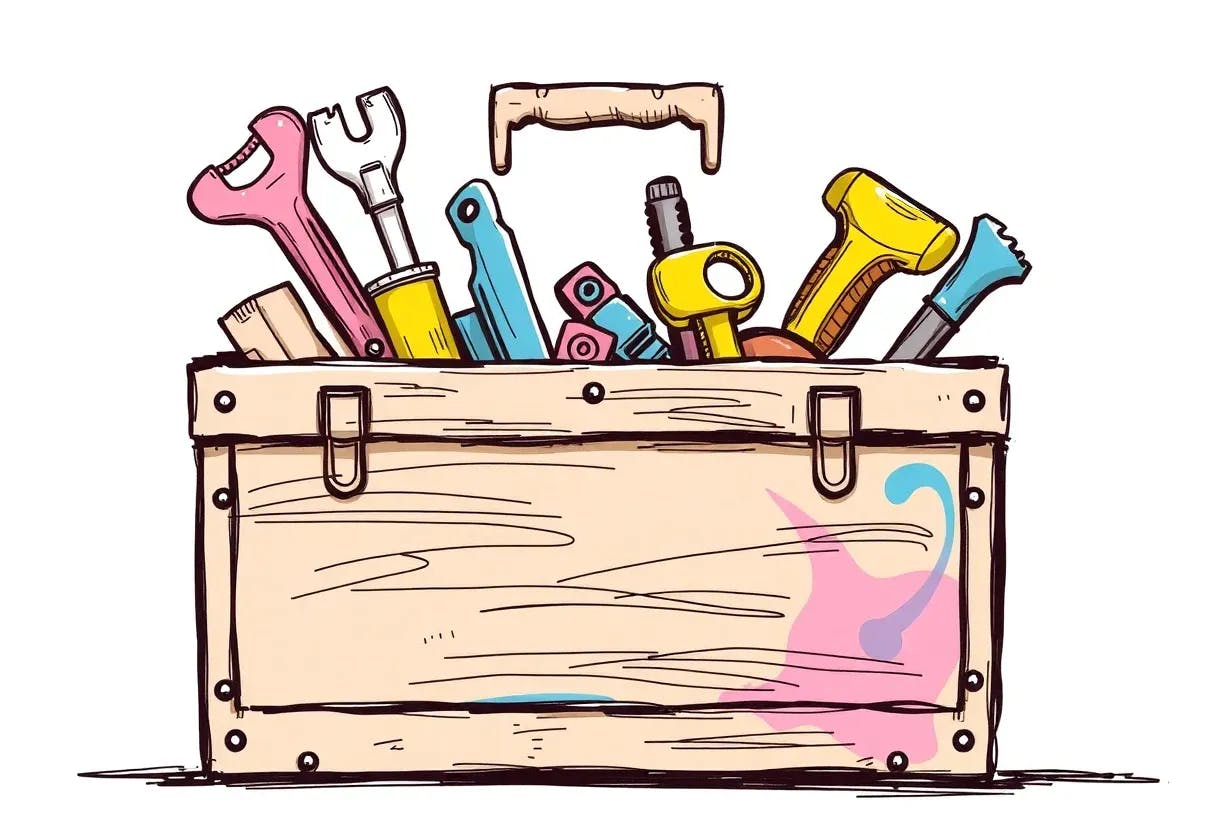Walking into my home office felt like entering a technology disaster zone. My desk overflowed with charging cables, Ethernet cords hung behind my entertainment center, and my garage Ring camera looked terrible with the power cord hanging in view. I kept telling myself that having this many devices meant I’d never get that clean, professional appearance without major renovations.
Boy, was I mistaken. I spent months getting annoyed by the mess before deciding to approach this methodically. I discovered that combining specific products with smart cable routing could fix every problem area. None of these fixes cost much or required advanced skills—I just needed to match the right solution to each particular challenge.
Strategic under-desk cable management
Containing the chaos beneath your workspace
My basement office desk was the most problematic spot. Power strips sat on the floor gathering dust while cables twisted into impossible knots. Every time I needed to plug something in, I had to crawl around like I was defusing a bomb.
Using Adhesive Cable Management Clips to hold the cords under my desk changed everything. They attached to the bottom of my desk with 3M sticky pads and screws, creating a proper home for my power strip, excess cables, and even the power blocks (with the help of some zip ties) for my two monitors. This became a major part of my home office organization project that transformed my entire workspace.
Every cable now has its own spot, eliminating the tangled mess that used to drive me crazy.
Running cables through walls like a pro
The professional solution for TV setups
My basement TV setup was another eyesore. The 75-inch screen looked fantastic mounted on the wall, but visible HDMI and power cables dropping to the entertainment center destroyed the sleek aesthetic.
Hiding cables inside walls sounds scary, but using proper in-wall enclosure kits makes it manageable. I found the studs, planned my route from behind the TV down to the entertainment center, cut holes, pulled cables through, and installed HDMI wall plates below.
The result was transformative—it has that custom installation appearance you’d expect from professionals.
Brush wall plates for clean cable passages
The simple solution for HDMI and other connections
Not every situation requires running wires through walls. Sometimes, you need a clean way to pass cables between rooms or through a wall to reach devices.
Brush wall plates became my go-to solution. These are the same size as standard outlets with brush-lined openings that allow cables to pass through while maintaining a finished appearance.
I installed these behind my cabinets in my home office, where HDMI cables needed to reach the smart TV on the adjacent wall. The brushes automatically close around cables, preventing dust while everything still looks intentional.
Installation is simple—cut the right size square hole with an oscillating tool and clamp the wall plate to the hole with the included bracket. The openings accommodate various cable sizes, making them versatile for different setups.
Desk grommets for laptop connections
Organizing your workspace surface properly
My desk always had cables everywhere for connecting my MacBook to monitors, adapters, and peripherals. Taking my MacBook elsewhere meant disconnecting multiple items and leaving messy cables behind.
Desk cable grommets fixed this perfectly. These round openings let cables pass through your desk while keeping everything neat. When you’re not using cables, you can snap the cover shut to hide the opening.
I installed a 2-inch grommet in the back corner of my desk where I keep my MacBook. All power, display, and data cables now route through this single point, keeping the surface clear while providing easy access.
Installation takes 10 minutes with a hole saw on a power drill. The grommet fits perfectly and includes a cover that matches most desk finishes. When I want to grab my MacBook and go, I just unplug it and leave—no cable cleanup is required. I used similar grommets on the wall when I mounted my Echo Hubs with PoE.
D-Line cord hiders for visible cable runs
Protecting and concealing exposed cables
Some cable runs can’t be hidden inside walls or under desks. My Ring camera needed power from an outlet 15 feet away, and baby monitors in my kids’ rooms required similar long-distance connections.
D-Line Half Round Cord Hiders provided the perfect solution. These paintable plastic channels mount to walls, ceilings, and baseboards, creating clean raceways while protecting cables.
For the garage Ring camera, I ran the cord hider up the wall from the outlet behind a cabinet. In my kids’ rooms, I used the same system to route baby monitor cables from above their cribs to the outlets without cords hanging everywhere.
Sticky backing makes installation easy without screws or anchors. You can cut channels to any length and paint them to match walls, making them practically invisible.
Cable chaos solved with the right approach
My cable management nightmare became a dream thanks to several focused solutions that actually worked. Every area needed something different, but picking the right product for each situation was key to success.
Well-organized cables are safer, easier to maintain, and make your setup look professional. Pick your most annoying problem area and work through your house systematically. You’ll be surprised how much better everything feels with proper cable management.













